Gregory L. Koch II earned his Bachelor’s degree in Technical Communication from New Mexico Tech in May of 2009 and is currently pursuing a Master’s degree in Information Technology at Rochester Institute of Technology. His interests include visual design, Internet and web communications, and single sourcing, server and network management. Greg has developed several web applications using Web Content Management Systems and recently served as Lead Web Developer and Designer for New Mexico Tech’s website redesign project.
Xchanges >> Issue 6.1>> The Benefits of Using Web Content Management Systems
The Benefits of Using Web Content Management Systems
Gregory L. Koch II
Abstract
In my thesis I review literature on the subject of Web Content Management Systems and discuss a survey I conducted to evaluate the use of Web Content Management Systems in Technical Communication and the benefits provided to organizations when using them. There is a significant amount of information about the features of Web Content Management Systems, but not a lot of research about the benefits, making it difficult for an organization to convince management the investment is worthwhile. My survey helps bridge this gap, providing primary research that illustrates the utility of Web Content Management Systems.
Introduction
Creating an impressive online presence for an organization is critical, but can be costly. There are many obstacles to overcome when creating a website, such as difficulties working with multiple developers, consistency, and technical knowledge of employees. Typically, organizations find it easiest to build a website by having each department create content and then send the content to the information technology department for uploading to the website. However, this disjointed process can lead to pages that are not uniform, represent the organization poorly, and cost the organization valuable time and money. A recent technology development, a Web Content Management System (WCMS), offers a valuable solution to these problems and many more. A WCMS is a database-driven website system that generates web pages per request, creating each page from a template and the desired content from the database.
An organization can save time and capital by reducing the dependency on others within the organization, increasing the amount of employees with the skills needed to manage the website, and creating a professional, uniform web page. When using a WCMS, content is created using a simple web-based form with editors similar to those found in common word processing software.
Implementing a WCMS can also save an organization time and money by solving workflow problems. When creating complex websites, development teams commonly include technical communicators and programmers or other individuals experienced with HyperText Markup Language (HTML) and other web markup languages. Using this type of team may seem like a great way for a company to produce web content; however, it requires content developers to either program the HTML themselves or give it to a programmer, generating an unnecessary additional step. Using "What You See is What You Get" editors (an editor that works like a word processor to generate HTML) can also be inefficient because these editors typically generate larger files and require users to enter server connection information they may not know or understand. WCMSs can assist organizations with these problems by eliminating the need for employees to have HTML knowledge or to know the proper server settings to create a page.
Even though WCMSs can make creating a webpage easier, they are still a relatively new technology and are not yet widely used. Many organizations may hesitate to switch to a WCMS because the initial costs can seem high, but the long-term benefits are obvious. Technical communication literature about WCMSs provides information about using, selecting, or implementing a WCMS; however, there is not much primary research to show the benefits of using a WCMS in an organization.
Background
As technology evolves, technical communicators create more deliverables in new formats, such as information for the web. Organizations need to publish product documentation and information online that is easy to access. It may sound like a simple task; however, it can be very tedious to ensure that an organization’s website is uniform, contains all the information a customer needs, and is easy-to-use. By using a WCMS, an organization can make it easy for every employee to update a website with a graphical user interface and style sheets that enforce organization-wide style and layout standards. WCMSs can be an all-inclusive solution for any organization if the system is used correctly.
Evolving from Markup to Structured ContentAbout fifteen years ago, websites were simply static files that contained HTML. Clark discussed how using HTML publishing was rich, simple, and efficient; websites could be more than just text, they could include images, colors, designs, etc. (34). However, the pages were still static and making changes was very difficult because a larger website, say 50 pages, could take hours to update. Not only was the process of updating static files time consuming, it also required a specific skill set (knowledge of HTML) that many people did not have.
Using “What You See Is What You Get” (WYSIWYG) editors removes the need to know HTML but requires that each page be updated independently, which is still very time consuming. In some cases, the editor may even make code that is difficult to read or edit and the code may not be standard (Clark 46).
Clark identifies how we have more recently overcome some of the issues of creating static pages by using Cascading Style Sheets (CSS). Clark identifies that there is still a problem with using HTML and CSS: the actual content is still static. Not only does using CSS remove the style from the HTML, but it also adds description to the code with class names.
Even though CSS made it easy to apply the same layout across every page in a website, there was still a problem: each page still needed to call on the same CSS files and contain the same basic HTML tags to make use of the styles. McKeever discusses the evolution from static HTML and CSS to WCMSs (689).
Creating HTML and CSS templates for the design and layout of the pages and storing the page content in a database can create pages created by merging the HTML and data based on each individual page request. Combining database content and template HTML and CSS provides the user with an up-to-date version of the page. More importantly, a WCMS allows the administrator(s) of the page to use a WYSIWYG editor to input the content of a single page, removing the need to insert the page design or layout information in each content item.
Selecting a Web Content Management SystemOrganizations seeking a powerful web presence need to be very careful about the systems they choose to implement and even more critical of the content and organization of their websites. The content they select to place on their websites can easily change the users’ opinions of the organization.
A technical communicator is a very valuable asset to an organization when designing and organizing content for the appropriate audiences and should be used in all cases. Technical communicators can help ensure the content on the page does not offend the user or create a negative image of the organization. Brinkkemper, et al. stress that businesses need to use the “Internet as a way to create competitive advantage, global collaboration and integration with external partners” (2).
In their article “Coming to Content Management,” Bernhardt et al. review two example cases, a non-profit organization’s website and the Michigan State University library website. In both cases a WMCS was needed to streamline web-publishing practices. They specifically looked at how the organizations connect with their readers and the services provided by the organizations. The non-profit organization case shows that a WCMS can be useful when targeting specific audiences, but also the importance of analyzing and understanding the website’s audience. By analyzing, not only the organizations’ website but, the internal processes of the organizations, they revealed a critical problem: the structure of the published content on their websites was very different from the organization of the organization’s internal. Thus, the organization needed to rewrite all the content developed internally to make it suitable for the web (Bernhardt, et al. 15).
Kim Guenther wrote a series of articles that discusses many of the features she considered when selecting a WCMS. Guenther identified some of the most important features to look for when selecting a WCMS:
- Access control and directory services
- Content repurposing
- Content separation with templates
- Content targeting
- Database capabilities
- Ease of use for non-technical users
- Metadata management
- Personalization
- Rollback capabilities
- Scalability
- Staging and production areas
- Support for multiple contributors
- Support for task-based workflow
- Supported file types
- Time-release/removal of content
- Use of third-party tools
- WYSIWYG and source code view
(“Choosing Web Content Management Solutions” 87)
This list of features is obviously not all-inclusive and the extent of online technology is almost endless, nonetheless, these are very important high-level features that one should consider when selecting a WCMS (“Choosing Web Content Management Solutions” 87).
By selecting a WCMS that allows an organization to reuse existing content, the organization can potentially save a significant amount of time and money. If current documents cannot be reused, it may mean the organization needs to restructure its methods of internal documentation and information design. Redesigning the organization’s processes can be very costly, but can be avoided if the correct system is acquired (Clark; Guenther).
Jupiter Media Metrix, a leading organization in Internet analysis and measurement, showed that organizations typically spend six times the cost of the WCMS in development, customization, and deployment of the systems to make them fit their needs. Rather than wasting money on customizing a system, the money could be better spent creating a proprietary system that would better serve the organization. According to this review, one-fifth of web developers are involved in content management, and 31% of organizations have developed custom content management systems (“The High Cost of Web Content Management” 8).
Many large organizations have transitioned to WCMSs because of increased productivity and decreased dependency on one individual who is managing the organization’s web presence. Larger organizations often design proprietary systems because their needs are very specific. Even though some situations require proprietary systems, WCMSs are becoming more common and many smaller organizations can find a solution that will suit their needs at little or no cost. Using a free, open source package removes the cost of the software, leaving organizations to pay for customization, initial design, and organization planning (“The High Cost of Web Content Management” 8, “Web 2.0 at Work” (26-27).
Ric Shreves, with Water & Stone, produced a report on the market share of open source WCMS. Shreves states that the metrics in this area are scarce, the literature is difficult to read, and both are driven by passion and commercial interest. Much of the data about WCMSs are unreliable. He conducted a survey of open source WCMS products and analyzed popularity (number of downloads and installations), support, literature in print, search engine visibility, reputation, and fan activity (on popular social networks). Shreves concluded that the open source market is currently dominated by three open source packages: WordPress, Joomla!, and Drupal.
Organizing ContentMany technical communicators spend a significant amount of time making sure that each page of a website will be displayed correctly. Eschenfelder said that, specifically in government web planning, developers do not give enough thought to planning web content (465). By using a WCMS, developers will spend less time on the design and layout because the template only needs to be created once and will be used across all the pages. Without concerns of the design and layout, developers are able to focus specifically on the content of the page and how the user will interact with the page.
Speed and efficiency are key benefits of using a WCMS; if a website lacks content structure, both of these benefits are lost. Users need to be able to find appropriate content and administrators need to be able to find content in the back end to make updates. Freeman and Yin discuss a method of developing a content organization structure based on algorithms. Their method may be perceived as very complicated and a bit over-the-top because of the “document clustering algorithms” they use, but the basic idea of content organization is very important (Freeman and Yin 1257). Their method provides a way of sorting content into trees, called topographical organization of content, similar to a hierarchical sorting and storing of information in folders. This creates a very logical and functional content structure.
Displaying personalized content is very easy when using a WCMS and can be as simple as showing pertinent information, or as complicated as displaying a user-customized page that was stored from previous sessions. Gibbs and Pong discuss how to create a personalized website with content management using a one-to-one strategy, delivering customized content for each user. The article presents the results of their study at a midwestern university, which asked students about how useful the university’s website was. Those who used the website said it would be more useful if it included some kind of interactivity (143). The interactivity can be as simple as a search function. Gibbs and Pong also confirm with their survey that most users do not mind if a cookie, a file that stores personal data on the user’s computer, is used to remember user settings or personal information (144).
Many websites collect and analyze user data such as Internet Protocol (IP) address, location (based on IP address), browser, operating system, and much more. This data is then used to change a website to better accommodate typical audiences. Byrne discusses how this information provides users with content they find more interesting. He suggests that this information can also be used by developers to create better content for the users, reducing the amount of time required to obtain the knowledge they were seeking (32-35).
Convincing ManagementThis extensive amount of information may be useful when selecting a WCMS, looking at technical specifications, and learning about the history of WCMSs, but there is no solid evidence that a WCMS can benefit an organization by examining this literature. This led me to create a survey to help fill the gap in the literature available to management and technical communicators.
Web Content Management System Survey
In this section, I discuss the survey I created to determine the use of WCMS by technical communicators and evaluate the cost- and time-saving benefits of using a WCMS.
Survey MethodsI developed three types of questions to collect information about the following topics: the individual and the organization they work for, the use of a WCMS in their organization, and the method of web publishing used if a WMCS is not. The questions I designed allowed me to analyze the benefits of WCMSs based on the length of time the system has been in use, the size of the organization and its web development team, and the type of system in use (licensed, open source, or proprietary). I asked users who do not currently use WCMSs about their web publishing methods to compare the amount of time spent creating web pages to organizations that do use WCMSs, aiming to clearly illustrate the differences and benefits of using of a WCMS versus using other methods.
Because I would be collecting data from people, I was required to seek approval of the NMT Institutional Review Board (IRB) before I could administer the survey. The IRB is designed to protect the rights of people participating in any research conducted by NMT students and personnel. The personally identifiable information I would be collecting was only to ensure the integrity of the data and would be removed from survey entries after data collection was complete. My survey was exempt from additional approvals and I was able to begin surveying participants immediately. However, the IRB did require that I inform participants I would be collecting some personally identifiable data and what I would be doing with them.
I wrote a custom PHP script, XHTML, and CSS to create the survey. The survey was hosted on a private, dedicated secure server located in Lansing, Michigan, and could be accessed at http://www.wcmsurvey.com/.
Before participants could complete the survey, they had to agree to allow data collection and provide their e-mail address; at this time their IP address was also recorded. After agreeing to the terms, one question would be displayed. After a question was completed, a JavaScript script checked the input and the next would appear.
Each participant answered either 9 or 10 of the 13 questions; if the participant answered that they used a WCMS, they would be directed to appropriate questions, if not, they would receive a different set of questions. After all questions were answered, the survey results were stored in a MySQL database on the server and all session information was destroyed. Screenshots of the survey and each question can be seen in Appendix A.
The survey was posted from Monday, November 17, 2008 at 10:00am MST, until Sunday, February 15, 2009 at 11:59 PM MST; the survey was online for ten weeks. I distributed the survey through the following Society for Technical Communication (STC) Special Interest Group (SIG) mailing lists: Single Sourcing, Usability, Online, Academics, and Instructional Design. These mailing lists reach approximately 3,500 technical communicators. I also posted the survey on the STC forums, which can be viewed by over 14,000 members.
Results and DiscussionI received a total of 71 responses. I deleted one response because it was incomplete. The total number of evaluated responses was 70. Of these 70 responses, 36 people (51.4%) stated they were using Web Content Management Systems (WCMSs) and 34 people (48.6%) stated they were not. The data supports my theory that WCMSs are becoming more used, but they are still not a standard across the industry. The results of each question can be found in Appendix B.
All ParticipantsI began the survey by asking participants about their role in their organizations. I have broken this data into two categories: users of WCMSs, and non-users. The data, shown in Table 1, reveal that most participants were considered either content developers or Webmasters (encompassing all positions: content developer, designer, and programmer). The data also show that more WCMS users are classified as Webmaster than those not using a WCMS. The data illustrates that by implementing a WCMS, organizations are able to combine the tasks of the typical web team (developing content, designing pages, programming pages) and create all-inclusive positions, allowing all members of the team to work on the same type of work.
Table 1 : Positions Held by Survey Participants
Position |
WCMS |
Non-WCMS |
Content Developer |
11 |
14 |
Designer |
2 |
5 |
Programmer |
3 |
1 |
Webmaster |
21 |
14 |
The next question asked participants how many people their organization employs. Table 2 shows the size of the organization and the need for a WCMS. The organizations that use WCMSs clearly have more employees.
Table 2 : Organization Size Based n Number of Employees
Employees |
WCMS |
Non-WCMS |
1-10 |
8 |
14 |
10-50 |
6 |
6 |
50-100 |
3 |
3 |
100-500 |
5 |
6 |
500+ |
14 |
5 |
Figure 1 illustrates that WCMS users and non-WCMS users are near opposites in organization sizes.
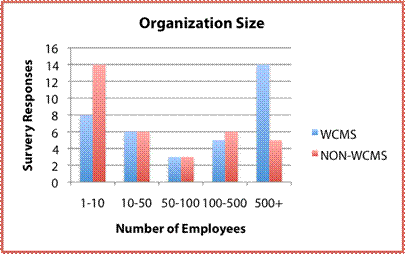
Figure 1 : Organization Size Based on Number of Employees
As an extension to the previous question, I asked how many employees were specifically responsible for web content within the organization. The results of this question are somewhat proportionate to the previous, and show that smaller organizations are not using WCMSs.
Table 3: Organization Size
Employees |
WCMS |
Non-WCMS |
1 |
5 |
14 |
2-5 |
16 |
13 |
5-10 |
7 |
3 |
10+ |
8 |
4 |
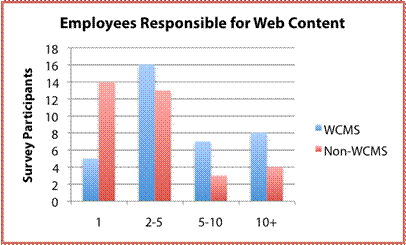
Figure 2: Number of Employees Responsible for Web Content
I was expecting to see a very large difference in the time it took WCMS users to enter pre-created content into their website versus non-WCMS users. I was surprised to see that the time required to insert content was similar for both. These numbers did not seem to have any kind of correlation to the size of the organization or number of employees working on the website either.
Table 4: Time Required to Insert Content into Website
Duration |
WCMS |
Non-WCMS |
< 1 |
5 |
3 |
1-5 |
9 |
7 |
5-10 |
10 |
9 |
10-20 |
5 |
7 |
20-30 |
2 |
3 |
30-45 |
3 |
2 |
45-60 |
0 |
2 |
> 1 hour |
2 |
1 |
The last question asked all participants to rate how difficult they felt it was to upload pre-created content to their website. Participants using a WCMS rated the difficultly slightly lower than those not using a WCMS, as shown in Table 5.
Table 5 : Difficulty of Web Editing
Difficulty |
WCMS |
Non-WCMS |
1 |
12 |
8 |
2 |
13 |
11 |
3 |
9 |
13 |
4 |
1 |
1 |
5 |
1 |
1 |
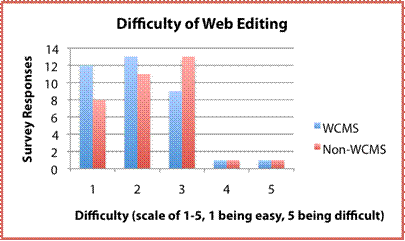
Figure 3 : Difficulty of Web Editing
The data collected from the participants’ answers demonstrate that by using a WCMS, a business can save a significant amount of time, hire fewer employees to complete web content tasks, and make managing websites much easier. As shown in Figure 1, WCMSs are more common in larger businesses but can benefit small business if the WCMS is used properly.
Participants Using Web Content Management SystemThe first question that was asked to only WCMS users identified how long they have been using their WCMS. A large amount of participants indicated they have only been using a WCMS between one and three years. This data argue that WCMSs are becoming more used, but are still not an industry standard.
Table 6: Duration a WCMS Has Been Used in the Organization
Duration |
Participants |
< 1 year |
5 |
1-3 years |
16 |
3-5 years |
8 |
5+ years |
7 |
The results of this question were surprising: 91.6% of the participants that are using a WCMS reported an increase in sales and web referrals. This figure demonstrates a significant trend, and shows the potential and benefits of a WCMS. The use of a WCMS has clearly created an advantage for these organizations, helping them increase their profits. As shown in Figure 4, thirty-three participants reported an increase in sales, one reported a significant increase, one reported a decrease, and one reported a significant decrease.
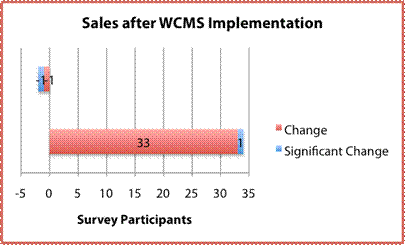
Figure 4 : Sales after WCMS Implementation
Looking at this data further, the participant that reported a significant increase had been using a WCMS for more than five years. By contrast, the participant that reported a decrease had only been using a WCMS for one to three years, and the participant that reported a significant decrease had been using a WCMS for less than one year.
Of the 33 participants who showed an increase in sales and web referrals, the duration they had been using a WCMS varied significantly. Though the data varied, they show that it is possible to benefit from using a WCMS within the first year of installation, and the benefits increase as time progresses.
Table 7: Duration of WCMS use With Increased Sales
Duration |
Participants with Increased Sales |
< 1 year |
4 |
1-3 years |
15 |
3-5 years |
9 |
5+ years |
6 |
I asked participants if the costs of maintaining their website had increased or decreased since they began using a WCMS. The data, shown in Table 8, were scattered and did not prove one way or the other that the WCMS itself was a cause of increased or decreased costs. The licensing systems used by WCMS companies varied and could not be ruled out as cost factors and the reason for an increase or decrease in costs. Increased costs can easily be offset by an increase in sales, and 91.6% of the participants indicated an increase in sales, as shown in Figure 4.
Table 8 : Costs of Maintenance after WCMS Implementation
Change |
Participants |
Significant Increase |
2 |
Increase |
15 |
Decrease |
16 |
Significant Decrease |
3 |
After reviewing the previous data, and seeing such wide variety of data, I was expecting to see some correlation between the sales, costs, and sizes of companies with the type of licensing used when implementing a WCMS. Oddly enough, the licensing was split evenly three ways, as seen in Figure 5.
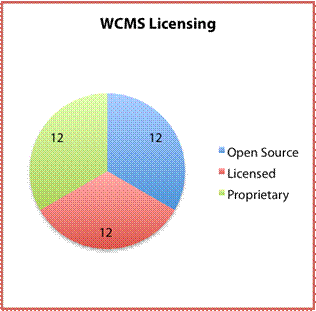
Figure 5 : WCMS Licensing Used
Since most participants stated they experienced sales increases, there were no direct correlations between the licensing method and sales increases. The participant who had significant sales increases and also the participant who had significant decreases had been using open source systems. The participant who had (non-significant) sales decreases had been using a proprietary system. Of the other 33 participants using a WCMS, ten had been using open source systems, 12 had been using licensed systems, and 11 had been using proprietary systems.
Participants Not Using Web Content Management SystemAbout half of the participants indicated they were not using WCMSs. Of the thirty-four participants, twenty-three said they are using a WYSIWYG editor like Dreamweaver or FrontPage. These applications present the user with an easy point-and-click method of editing files, but do not provide intuitive methods of including CSS files, which users generally embed into each individual HTML file. Applications like FrontPage require the user to specify server settings to upload files. Because of this requirement, the user needs knowledge of technologies like FTP.
Only three of the thirty-four participants indicated they are using offline WCMSs like Contribute. Software like Contribute works just like Dreamweaver with a WYSIWYG editor, requiring settings to be entered, but adds support for multiple users and simultaneous editing.
In addition to using WYSIWYG editors, 25 of the 34 participants indicated they also manually edit HTML files. This shows that users who do not use WCMSs are required to have knowledge of programming languages. These same users also indicated that editing their website is more difficult and that adding content to their website takes slightly longer versus those using a WCMS for the same tasks.
ImplicationsLooking through the data collected through my survey, the benefits of using WCMSs becomes clearer and can be directly related to the previous literature on the subject. In this section, I return to the literature I found and discuss how it supports my survey and thesis.
Emerging TechnologyAs I have already explored in the background section, technology is quickly changing. Throughout the years, web technologies have progressed from simple HTML (combining content with style and layout), to HTML and CSS (separating content from style and layout), to WYSIWYG editors in combination with HTML and CSS (providing an easy editing method for updating pages and keeping them consistent). With database technologies becoming more popular, the next logical step is to integrate the previous technologies with the new, more useful technology. WCMSs embody this integration.
While my survey shows that older technologies are still used, it provides evidence that WCMSs are becoming more popular, with a little more than half of the participants using a WCMS. The survey data also provide evidence that larger organizations are more commonly using this technology, and in doing so have saved time and money while generating more sales.
Because the technology is so new, many people are hesitant to use it. Installing, configuring, and populating a WCMS can be costly and time consuming. By selecting the right system, based on requirements of the organization, the organization can use content they already have and easily adapt it for the web. It becomes easier to convince administration of the benefits of using a WCMS when an open source package can be used.
System SelectionSelecting the correct system is very critical to benefiting from a WCMS, and the process begins with the license type the organization selects. The survey I conducted shows that organizations choose a variety of license types. The 36 participants using WCMSs were divided equally between open source, licensed, and proprietary systems. Shreves presented data about commonly used open source WCMS and their popularity and available support. Guenther provided a list of features an organization may need to consider in addition to the license type.
When considering a system, the initial cost of purchasing the system can really impact the productivity of implementation. If the expected profits from using a WCMS outweigh the costs of implementation, it is obviously beneficial. If an open source system can be used in lieu of a costly system, the savings would be much higher. As seen in my survey, 91.6% of the participants’ organizations experienced increases in sales.
When selecting a system, an organization should look at the architecture of the database system and the possibility of content reuse. If the database can be populated with existing content, an immense amount of time can be saved. The system should also allow for easy integration into the current system and procedures.
Ease of use should also be a key factor in selecting a system. If the system does not accommodate an organization’s needs, it can increase the amount of time required to add content and reduce the employee productivity. This would obviously be a problem and should influence the selection of a system greatly. My survey shows that, overall, people using a WCMS found it easier to add content to a website than editing content manually with an offline editor or directly with HTML.
ConclusionWeb content management systems propose many interesting changes to the way organizations work with their websites. When used correctly, they have the potential to save organizations tremendous amounts of time and money. As shown in my survey, they can help improve an organization’s image and increase their sales. Implementing a WCMS is generally a great investment that will pay for itself over a short period of time.
Even though there is not a large amount of literature on the benefits of WCMSs, there is information that can help organizations with their decisions when selecting WCMSs. In many cases, management requires certain features and may limit the budget for WCMS implementation. If management is presented with factual evidence that, with the correct system, a significant increase in productivity and sales will occur, it may help sway their decision.
My primary research shows that WCMSs are being used more widely by organizations and justifies looking into more specific questions about the implementation of WCMSs, including sales figures before and after implementing a WCMS, client relationships, and satisfaction of the employees responsible for the website. A case study showing the specific benefits of implementing a WCMS would also benefit technical communicators, information technology specialists, and administrators greatly.
As mentioned above, the university I attend will be launching a new website, using an open source WCMS. Even as early as the development and population phases of the new website, the benefits of using a WCMS are obvious. Employees across campus will be able to update their sections of the website without the webmaster’s involvement.
As a continuation of the NMT website redesign, I plan to create a set of surveys to ask users and administrators of the website about their experiences with the current website (which uses only HTML files) and the new website. The additional research will also significantly benefit technical communicators looking at methods for streamlining their web work.
In my thesis I have explored the literature of Web Content Management systems and identified a significant gap in the literature. Because of this gap I created a survey to identify whether WCMSs are being used and the benefits organizations have found while using them. My study has added valuable information to the area of WCMSs but could be continued by administering case studies and additional surveys.
Works CitedAnderson, Rebekka. “The Rhetoric of Enterprise Content Management (ECM): Confronting the Assumptions Driving ECM Adoption and Transforming Technical Communication.” Technical Communication Quarterly, 17.1 (2008): 61-87.
Bernhardt, Grace, Jeffrey T. Grabill, William Hart-Davidson, Michael McLeod, and Martine Rife. “Coming to Content Management: Inventing Infrastructure for Organizational Knowledge Work.” Technical Communication Quarterly, 17.1 (2008): 10-34.
Brinkkemper, Sjaak, Jurriaan Souer, Inge van de Weerd, and Johan Versendaal. 2005. Situational Requirements Engineering for the Development of Content Management System-based Web Applications. The Netherlands: Institute of Information and Computing Sciences, Utrecht University.
Byrne, Tony. “Mashing Up Web Analytics and Web Content Management.” EContent Magazine 6.10 (2007): 32-35.
Clark, Dave. “Content Management and the Separation of Presentation and Content.“ Technical Communication Quarterly, 17.1 (2008): 35-60.
Eschenfelder, Kristin R. “How do government agencies review and approve text content for publication on their websites? A framework to compare Web content management practices.” Library & Information Science Research 26 (2004): 463–481.
Freeman, Richard T., and Hujun Yin. “Web Content Management by Self-Organization.” IEEE Transactions on Neural Networks 16.5 (2005): 1256-1268.
Gibbs, William J., Yee Pong NG. “Web Content Management and Personalization Using One-To-One Strategy.” International Journal of Instructional Media 34.2 (2007): 133-48.
Guenther, Kim. “Choosing Web Content Management Solutions.” Online Magazine 25.5 (2001): 84-87.
---. “What Is a Web Content Management System?” Online Magazine 25.1 (2001): 81-84.
---. “Content Management Systems as ‘Silver Bullets.’” Online Magazine 30.4 (2006): 54-56.
Halkidi, Maria, Benjamin Nguyen, Iraklis Varlamis, and Michalis Vazirgiannis. “THESUS, a Closer View on Web Content Management Enhanced with Link Semantics.” IEEE Transactions on Knowledge and Data Engineering 16.6 (2004): 685-700.
Information Management Journal. “The High Cost of Web Content Management.” Information Management Journal 36.5 (2002): 8.
---. “Web 2.0 at Work.” Information Management Journal 41.4 (2007): 26-27.
McKeever, Susan. “Understanding Web content management systems: evolution, lifecycle and market.” Industrial Management + Data Systems 103 (2003): 686-692.
Shreves, Ric. “Open Source CMS market Share.” Water & Stone. July 28, 2008.
Appendix A: Survey Questions
Questions 1-3 and 11-13 were asked to all individuals surveyed; questions 4-7 were asked only to those who answered yes to question 4, and questions 8-10 were asked only to those who answered no to question 4.
Introduction to Survey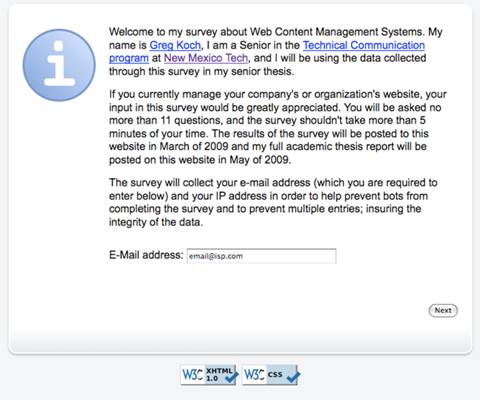
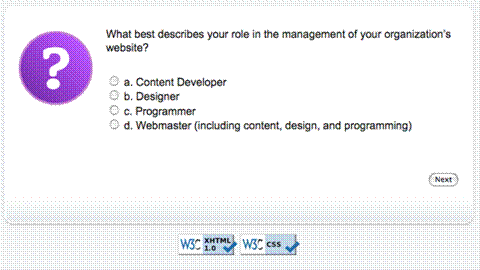
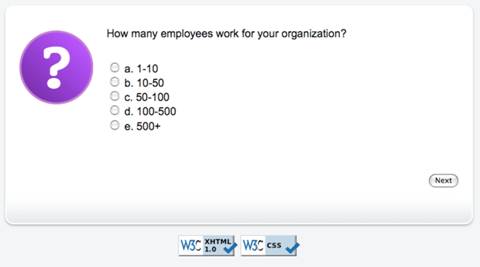
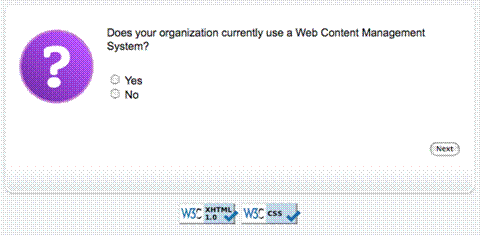
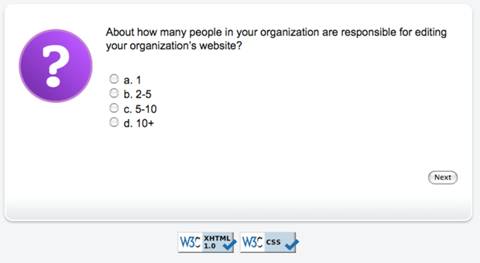
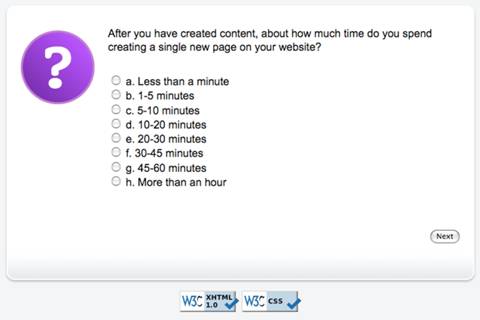
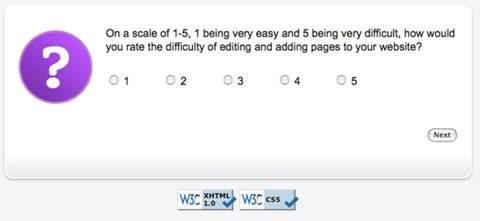
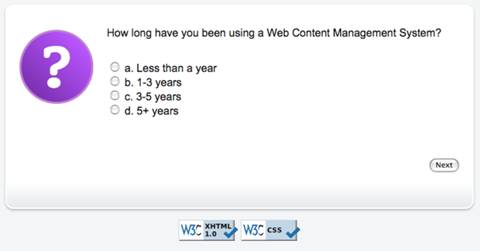
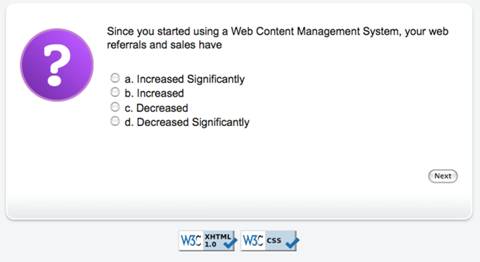
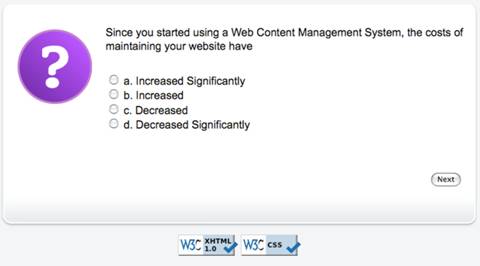
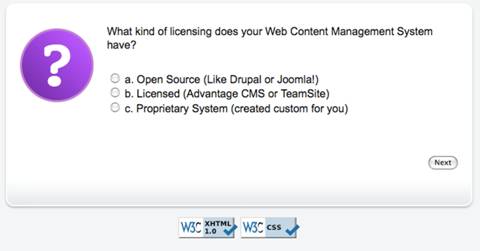
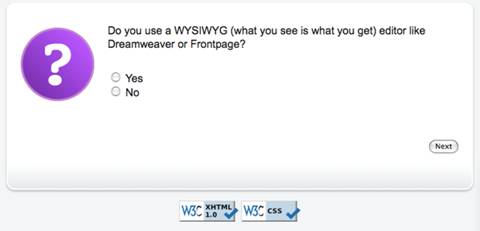
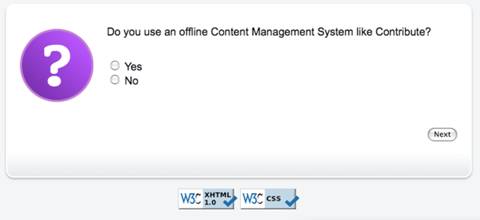
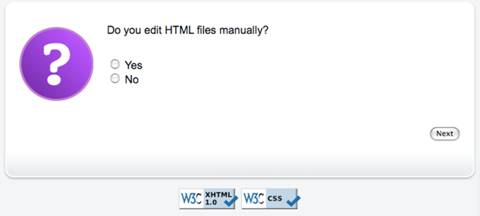
Appendix B: Survey Data
This section contains the questions that were asked to survey participants, the answers received, and the percentage
Questions asked to all usersWhat best describes your role in the management of your organization’s website?
WCMS Users
11 (30.5%) content developer
2 (5.5%) designer
3 (5.5%) programmer
21 (58.5%) webmaster (content, design, and programming)
Non-WCMS Users
14 (41.2%) content developer
5 (14.7%) designer
1 (2.9%) programmer
14 (41.2%) webmaster (content, design, and programming)
How many employees work for your organization?
WCMS Users
8 (22.2%) 1-10
6 (16.7%) 10-50
3 (8.3%) 50-100
5 (13.9%) 100-500
14 (38.9%) 500+
Non-WCMS Users
14 (22.2%) 1-10
6 (16.7%) 10-50
3 (8.3%) 50-100
6 (13.9%) 100-500
5 (38.9%) 500+
About how many people in your organization are responsible for editing your organization’s website?
WCMS Users
5 (13.8%) 1
16 (44.4%) 2-5
7 (19.4%) 5-10
8 (22.4%) 10+
Non-WCMS Users
14 (41.2%) 1
13 (13.2%) 2-5
3 (8.8%) 5-10
4 (11.8%) 10+
After you have created content, about how much time do you spend creating a single new page on your website?
WCMS Users
5 (13.9%) <1
9 (25%) 1-5
10 (27.8%) 5-10
5 (13.9%) 10-20
2 (5.5%) 2-30
3 (8.4%) 30-45
0 (0%) 45-60
2 (5.5%) > 1 hour
Non-WCMS Users
3 (8.8%) <1
7 (20.6%) 1-5
9 (226.5%) 5-10
7 (20.6%) 10-20
3 (8.8%) 2-30
2 (5.9%) 30-45
2 (5.9%) 45-60
1 (2.9%) > 1 hour
On a scale of 1-5, 1 being very easy, and 5 being very difficult, how would you rate the difficulty of editing and adding pages to your website?
WCMS Users
12 (33.3%) 1
13 (36.1%) 2
9 (25%) 3
1 (2.8%) 4
1 (2.8%) 5
Non-WCMS Users
8 (23.5%) 1
11 (32.4%)
13 (38.3%) 3
1 (2.9%) 4
1 (2.9%) 5
How long have you been using a WCMS?
5 (14%) <1 year
16 (44%) 1-3 years
8 (22%) 3-5 years
7 (20%) 5+ years
Since you have started using a WCMS, your web referrals and sales have
1 (2.8%) significantly increased
33 (91.6%) increased
1 (2.8%) decreased
1 (2.8%) significantly decreased
Since you started using a WCMS, the costs of maintaining your website have
2 (5.5%) significantly increased
15 (41.6%) increased
16 (44.4%) decreased
3 (8.5%) significantly decreased
What kind of licensing does your WCMS have?
12 (33.3%) Open Source
12 (33.3%) Licensed
12 (33.3%) Proprietary
Do you use a WYSIWYG editor like Dreamweaver or Frontpage?
23 (67.6%) Yes
11 (32.4%) No
Do you use an offline CMS like Contribute?
3 (8.8%) Yes
31 (91.2%) No
Do you edit HTML files manually?
25 (73.5%) Yes
9 (26.5%) No